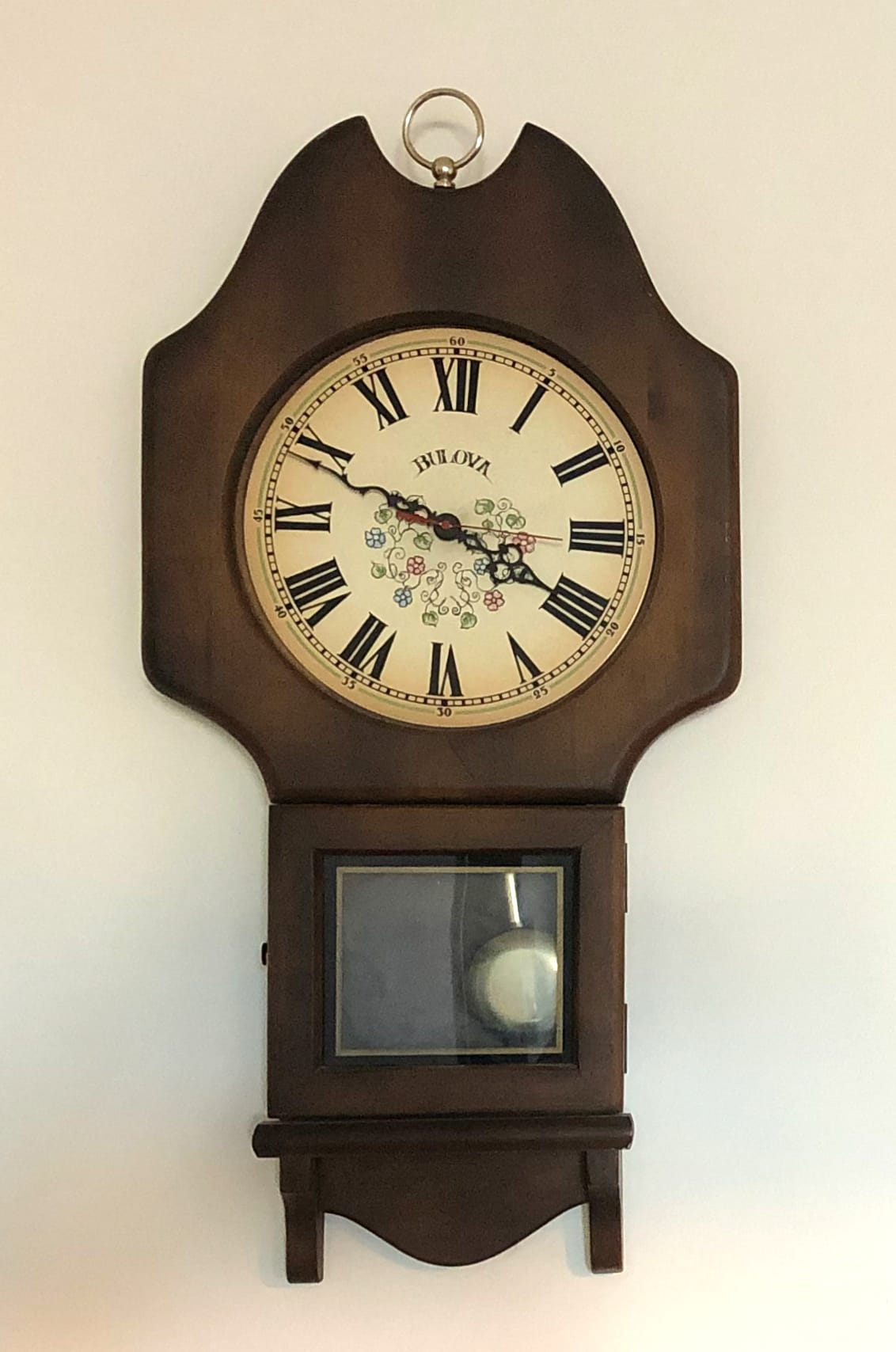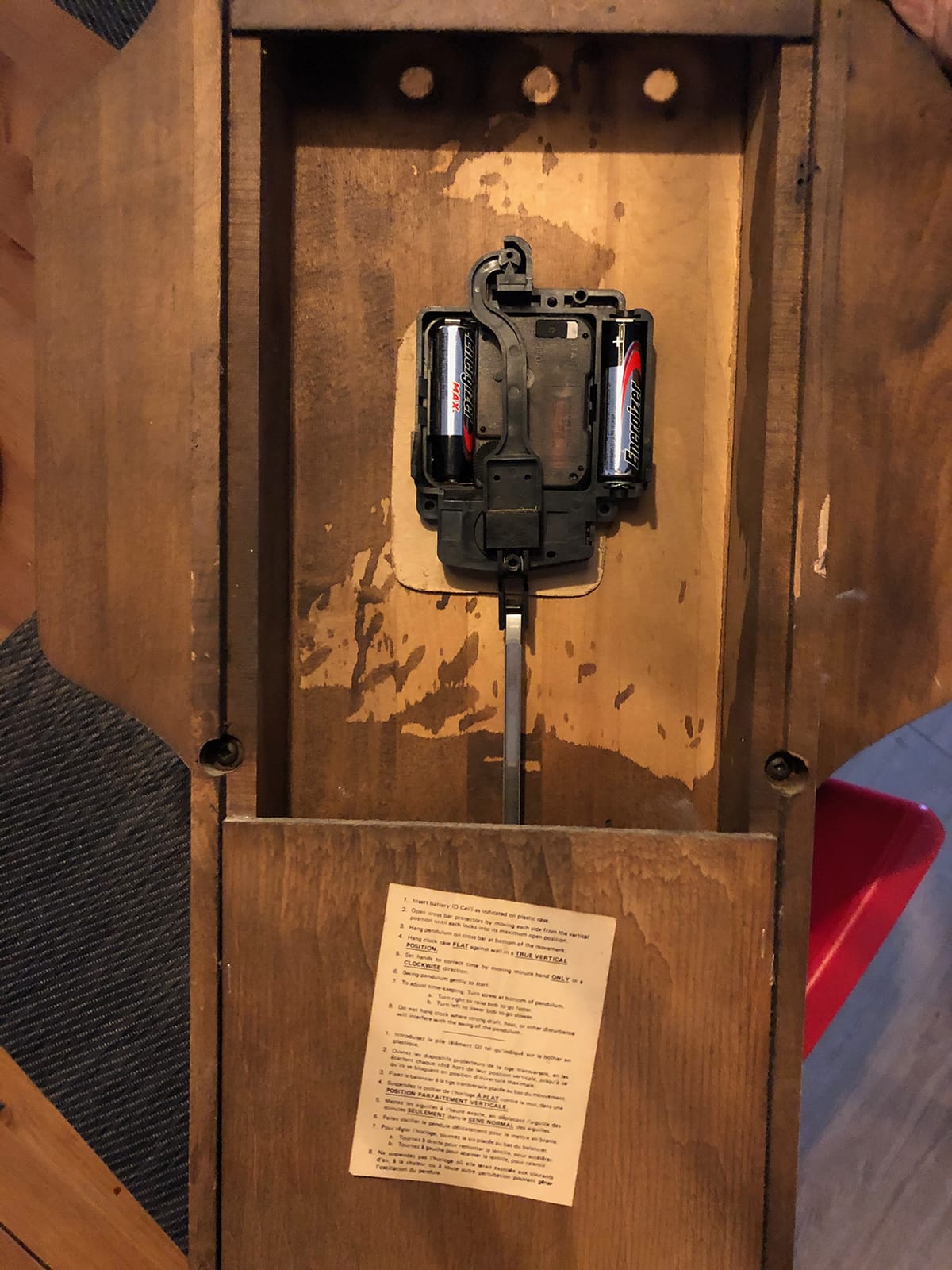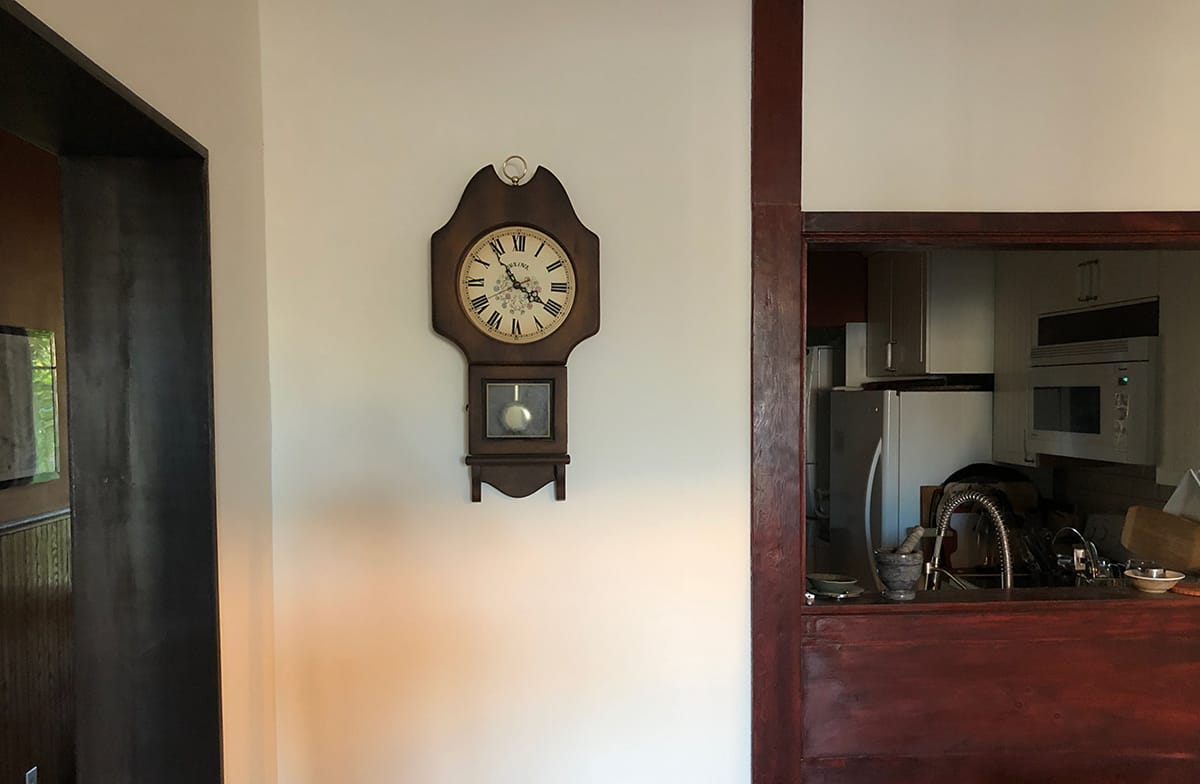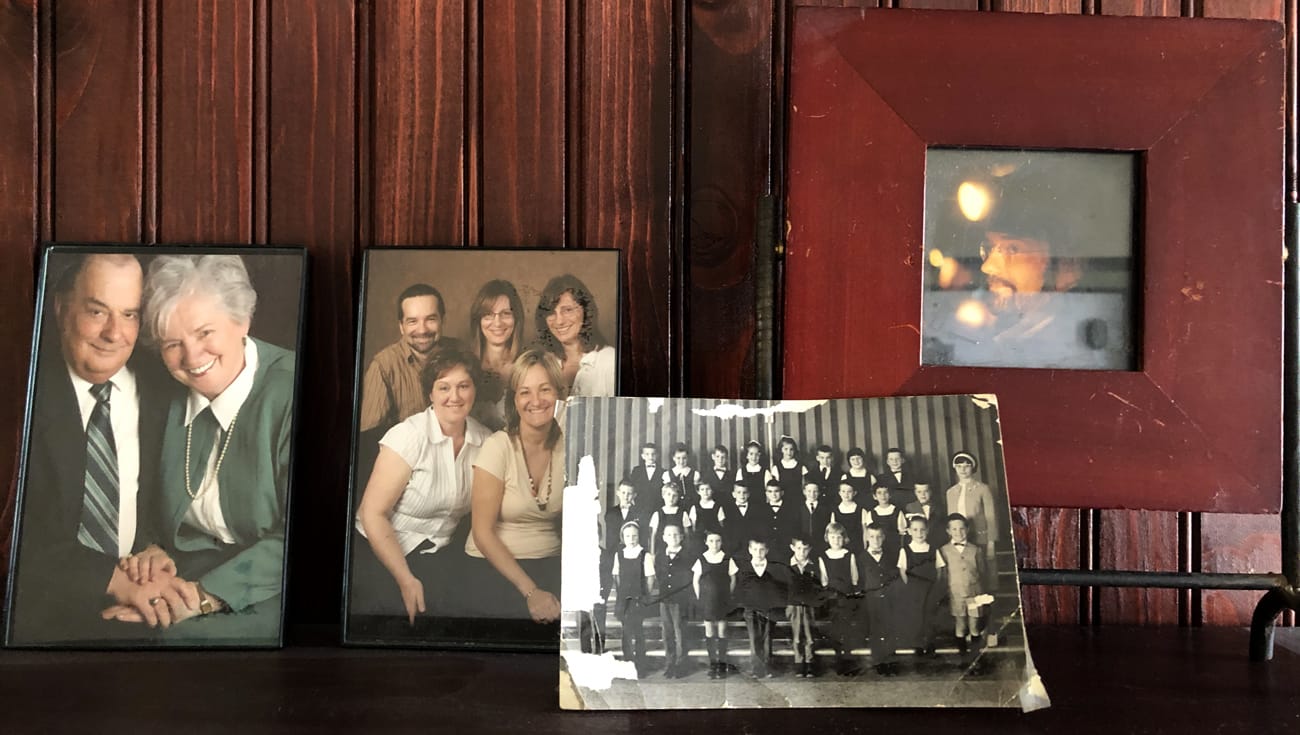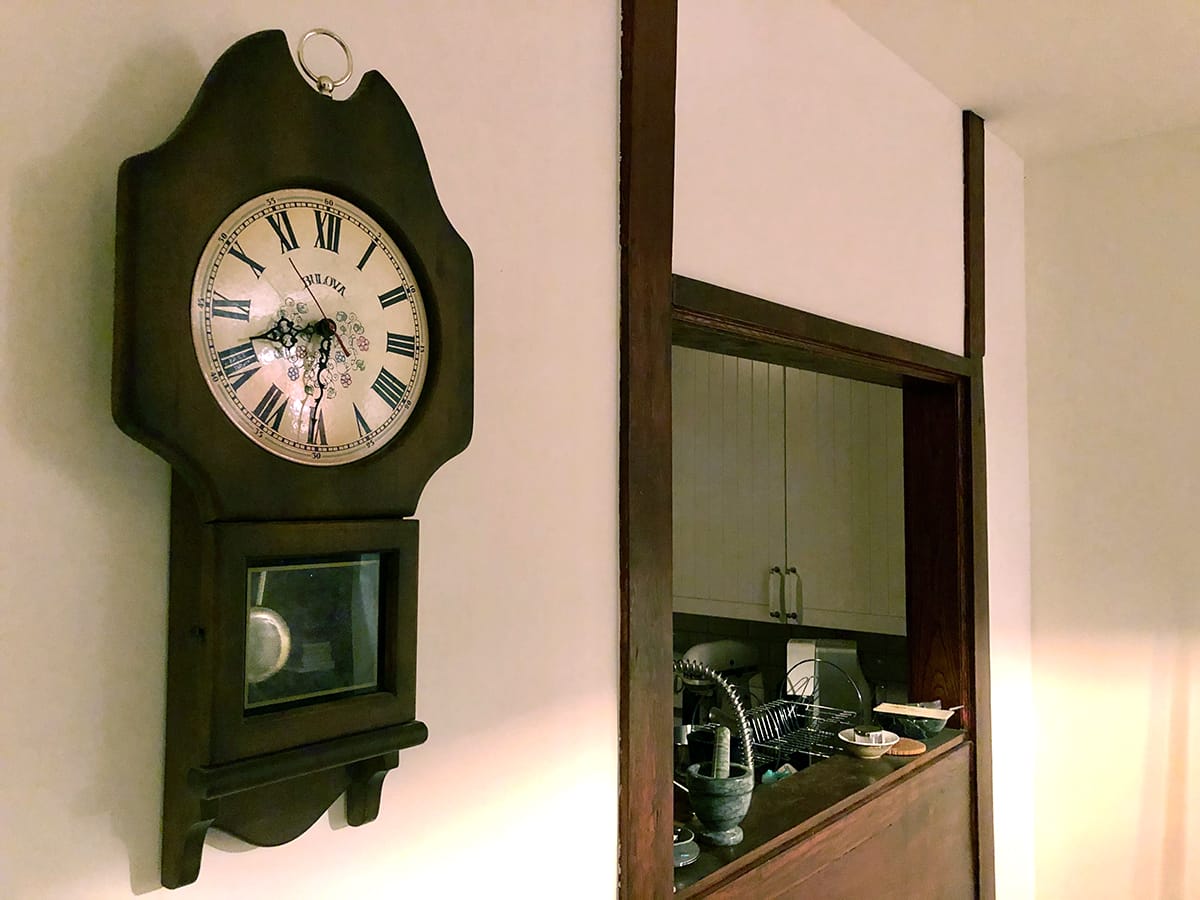
Tock, tock, tock
I don’t know when I received the clock from my paternal grandmother, probably when Germaine "broke the house" to go live with her daughter Jeanne D’Arc. I had hung it in the hallway of my new house in 2008 until I started to undo everything. It spent about ten years in the basement, hanging from a joist.
As with the photos I’ve put back together, I took the opportunity to dust off the clock, replaced its batteries, and hang it in the dining room. I feared that it had died because one of the old batteries had slightly leaked.
But it seems to be keeping time.
Surprised to find it in my possession, my family wondered how old the clock could be. It’s hard to tell because there’s nothing on the back that helps us. At first, I thought, since it runs on AA batteries, it must not be that old. This type of battery was invented in 1907, and its actual format was standardized in 1947. However, the plastic mechanism betrays its time. A reverse photo search allowed me to discover a similar clock dating from 1970.
I read a little about of [Bulova’s history](https://en.wikipedia.org/wiki/Bulova), a company founded at the end of the 19th century by Mr. Joseph Bulova (of course), Bohemian who immigrated to the United States.
The clock itself is only of value because it belonged to my grandmother, who died at 100 years old.
I was surprised by one thing when I was enjoying my last day off, reading in the large room where it was hung: tock, tock, tock.
Time as I had heard it before, every second more insistent than the drops of water from a badly turned off faucet. It was both peaceful when I lingered, irritating when I read. Eventually, I get used to it. Tock, tock, tock, and then time goes by. Tock, Tock, tock, it’s still there! Tick, tack, tock; it’s vast, one second, it’s a whole ocean, one hour...
Is it a good thing that we have silenced these clocks with our electronic watches? This question does not even deserve an answer. Things are what they are.
Tock, tock, knock, the planets are still dancing, remember?
